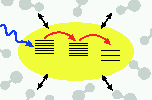External Field Control of Quantum Dynamics
Laser pulse guided molecular dynamics within closed loop control experiments represents one frontier in ultrafast optical spectroscopy. The whole research field is based on the vision to tailor femtosecond laser pulses in the optical and infrared region in order to drive the molecular wave function in a particular way. One tries to remove certain parts of the molecule (laser pulse driven dissociation), one switches the molecule between different conformations, or one guides electron as well as excitation energy transfer.
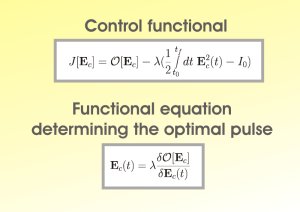 |
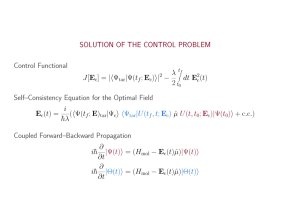 |
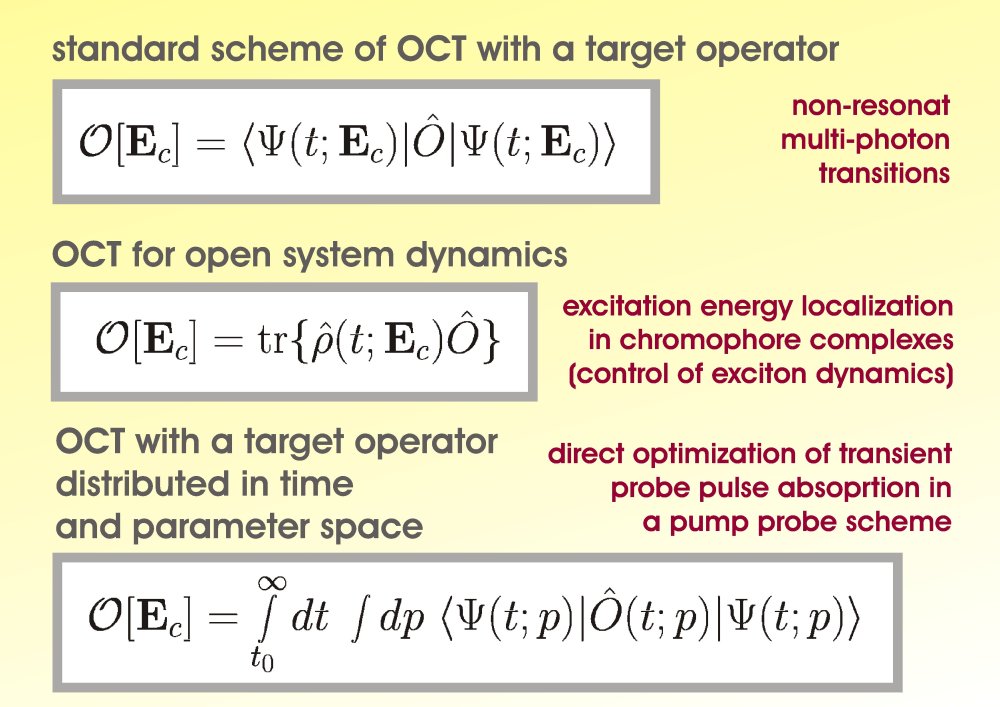 |
Theoretical simulations of such experiments are mainly carried out in the framework of the Optimal Control Theory (OCT). But while the studies in closed loop control experiments concern multi-dimensional wave packet dynamics in polyatomic and condensed phase systems, OCT based simulations are restricted to models with at most two nuclear coordinates. However, to understand the molecular dynamics which underly the particular control mechanism realized in the experiment, more sophisticated models are often necessary. One way out would be the application of dissipative quantum dynamics methods.
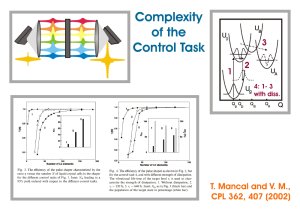 |
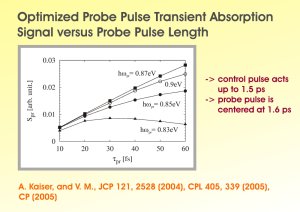 |
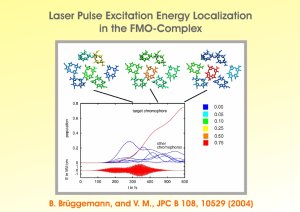 |
OCT and its specification to open system dynamics gives the formal framework to compute the laser pulse (the control field) which optimizes the observable measured in the particular control experiment (under the constraint of a finite laser pulse intensity). In its most basic form the observable is defined via a particular state of the active system, the so-called target state, which should be realized in the external field driven molecular system at a particular time. Then, one may try to maximize the overlap of the field driven wave function with the target state to compute the respective control field.
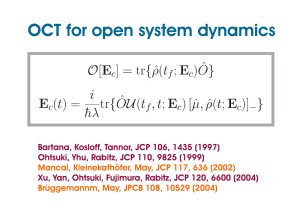 |
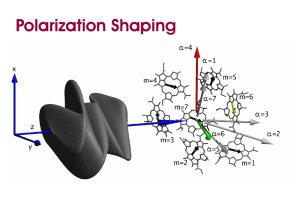 |
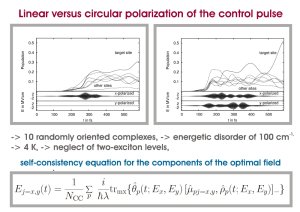 |
Literature:
- T. Mancal and V. May:
Laser Pulse Control of Ultrafast Electron Transfer Reactions
Euro. Phys. J. D, 14 , 173 (2001). - T. Mancal and V. May:
Interrelation between Optimal Control Theory of Molecular Dynamics and Femtosecond Pulse Shaping Techniques:
A Way to Characterize the Complexity of the Control Task
Chem. Phys. Lett. 362, 407 (2002). -
B. Brüggemann and V. May:
Ultrafast Laser Pulse Control of Exciton Dynamics:
A Computational Study on the FMO Complex
Gerald F. Small Festschrift, J. Phys. Chem. B 108, 10529 (2004). -
A. Kaiser and V. May:
Optimizing frequency dispersed transient absorption signals:
A computational study
Chem. Phys. Lett. 405, 339 (2005). - B. Brüggemann, T. Pullerits, and V. May:
Laser Pulse Control of Exciton Dynamics in the FMO Complex:
Polarization Shaping versus Effects of Structural and Energetic Disorder
J. Photochem. Photobio. A 180, 322 (2006),
special issue on coherent control of photochemical and photobiological processes, ed.: J. L. Herek. - Application of the Optimal Control Theory to Ultrafast Non-Resonant
Multiphoton Transitions in Polyatomic Molecules
Opt. Comm. 264, 502 (2006). - L. Wang, H.-D. Meyer, and V. May:
Femtosecond Laser Pulse Control of Multidimensional Vibrational Dynamics:
Computational Studies on the Pyrazine Molecule
J. Chem. Phys. 125, 014102 (2006).

